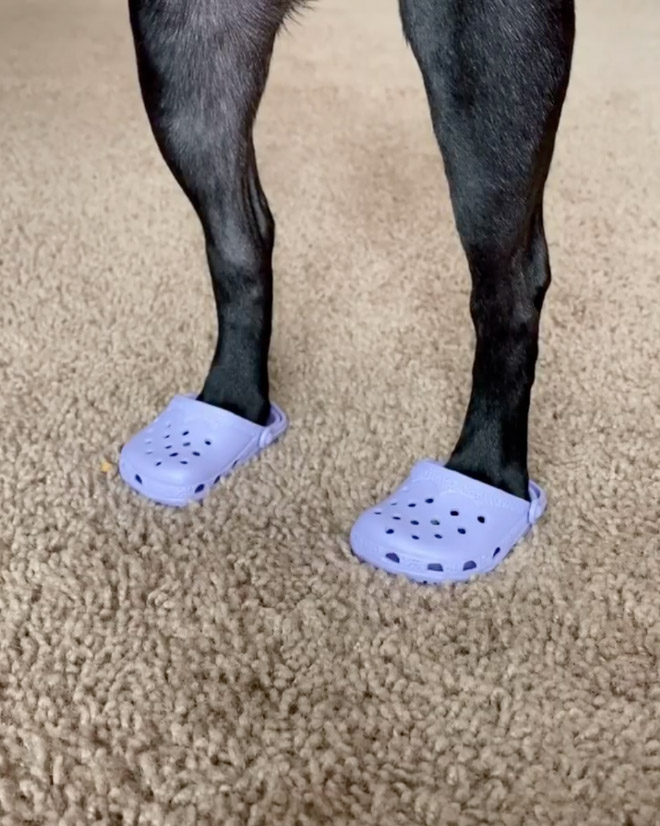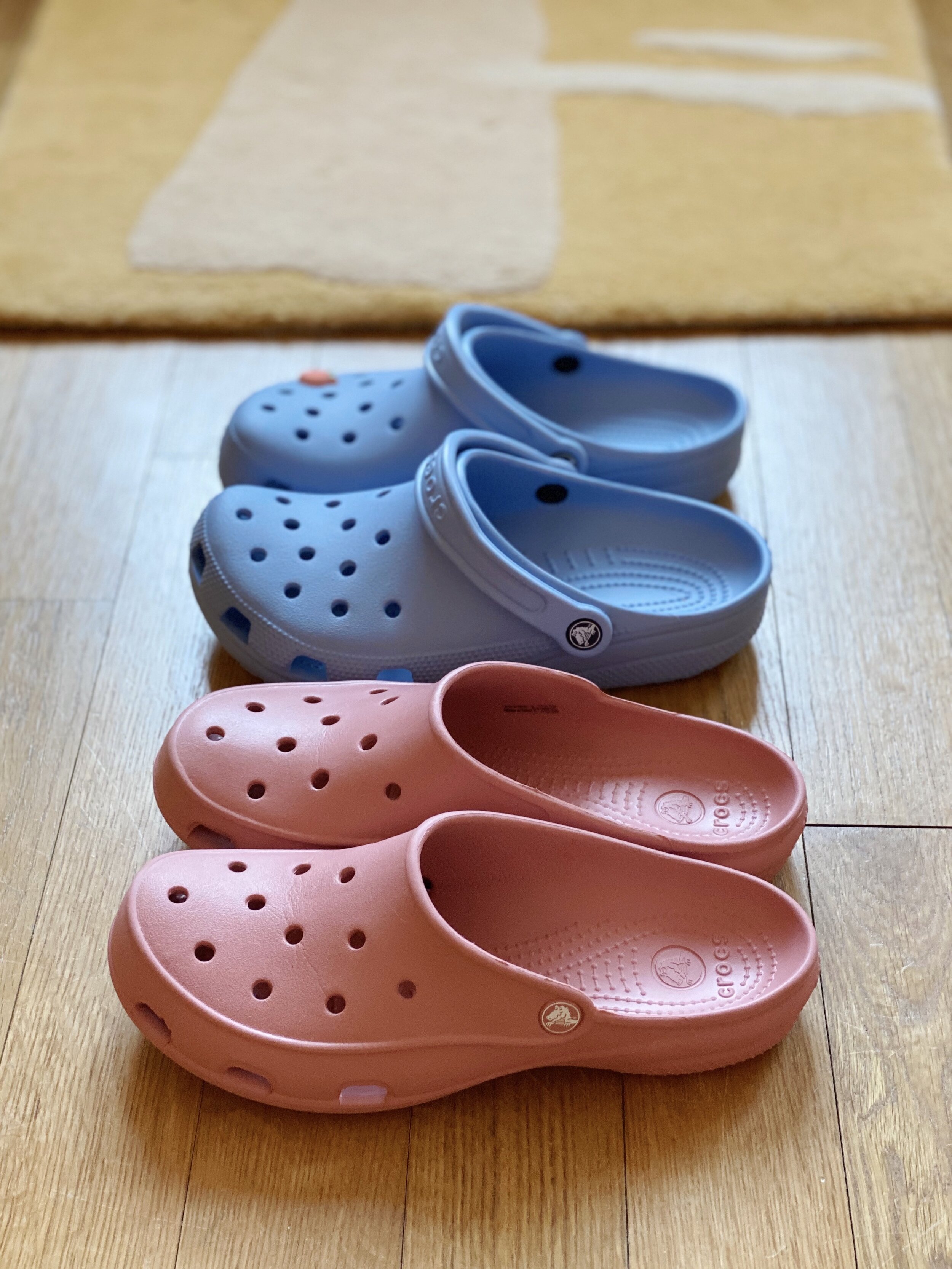Could you stomach a Croc? The answer, unequivocally, is no. Despite the persistent, albeit bizarre, curiosity surrounding the culinary potential of these ubiquitous foam clogs, the consensus is clear: Crocs are not food. This piece delves into the unsettling question of Croc consumption, dissecting the myth, the materials, and the potential perils of attempting to transform footwear into a meal.
The internet, a breeding ground for the weird and wonderful, has fostered a peculiar fascination with the edible properties of everyday objects. Among the more eccentric inquiries is the query of whether the Crocs shoe – a lightweight, slip-resistant, and undeniably distinctive piece of footwear – can be safely consumed. The answer, consistently delivered across various platforms and by a spectrum of experts, is a resounding negative. Yet, the question persists, prompting investigations into the composition, the potential health risks, and the sheer audacity of even contemplating such a culinary experiment.
| Aspect | Details |
|---|---|
| Product | Crocs Shoes |
| Material Composition | Croslite™, a closed-cell resin; a proprietary material of Crocs, Inc. It's not rubber or plastic but a unique polymer. |
| Toxicity | Non-toxic in the sense that short-term exposure or incidental ingestion is unlikely to cause severe harm. However, it is not designed for consumption. |
| Edibility | Absolutely not. Crocs are not meant to be eaten and are not digestible as food. |
| Taste and Texture (Hypothetical) | Reports suggest a rubbery or plastic-like texture, with a potentially unpleasant taste. These accounts are largely anecdotal and speculative. |
| Health Risks | While Croslite is non-toxic, the body cannot digest it. Eating Crocs could lead to gastrointestinal discomfort, potential blockages, and lack of nutritional value. |
| Alternative Uses | Crocs are designed for footwear. They can be recycled, repurposed, or donated. |
| Official Stance (Crocs, Inc.) | Crocs, Inc. strongly advises against eating their products. |
| Reference | Crocs Official Website |
The core issue lies in the material from which Crocs are constructed: Croslite™. This proprietary material is a closed-cell resin, a type of foam that is neither rubber nor plastic, but a unique formulation developed by Crocs, Inc. The company touts Croslite’s properties: lightweight, odor-resistant, and providing cushioning. However, these desirable characteristics for footwear do not translate to edibility. Croslite is not designed to be consumed, and its chemical composition is not intended for human digestion.
Numerous online sources have weighed in on the subject. Can You Eat Crocs? - No Way! Know This, provides a straightforward assessment, emphasizing that Crocs are made from Croslite™, a non-toxic but inedible material. Similarly, Crocs? - Can You Eat unequivocally states that Crocs are not food and should never be treated as such, warning against any attempt to consume them. The article details the material composition and the health risks associated with such actions, offering alternatives like recycling or repurposing.
BootMoodFoot also tackles the question, seeking to understand the safety of eating Crocs, and offering advice that is more in line with survivalist or novelty purposes, with a clear disclaimer about it not being advised as the intention.
The supposed non-toxicity of Croslite™ is often cited as a point of discussion. While it’s true that the material is non-toxic in the context of its intended use – as a component of footwear – this does not render it safe for consumption. The human body is not equipped to digest this material. Furthermore, the materials might have additions that are not meant to be ingested, as a result of any special features or properties the Crocs have.
Consider the mechanics of digestion. Food is broken down into its constituent parts, which can then be absorbed and utilized by the body. Croslite™, being a synthetic polymer, lacks the nutritional components and digestive pathways needed for this process. Consuming Crocs could lead to gastrointestinal distress, potential blockages, and the complete absence of any nutritional benefit. The body would recognize it as a foreign substance and be unable to process it effectively.
The notion of cooking or preparing Crocs for consumption has also surfaced in online discussions. Some have jokingly inquired about how to boil, season, or slice Crocs for survival or novelty purposes. Such explorations are, at best, misguided. The heat and cooking methods that render some foods safe for consumption would not alter the fundamental inedibility of Croslite™. Any attempt to “prepare” Crocs for eating would only result in a potentially unpleasant, and ultimately pointless, culinary experience.
The taste and texture of Crocs, should one dare to ingest them, have been described in various anecdotal accounts, although not by experts. Some have described the taste and texture as rubbery or plastic-like, while others have speculated on a potentially unpleasant flavor. But these are just speculations. These accounts, however, are based on an absence of actual data and scientific research.
The online articles consistently offer a practical perspective. Rather than pondering the culinary applications of Crocs, they recommend focusing on their intended purpose: footwear. Recycle or repurpose them, as “Crocs Shoe - Can You Eat” suggests. The question of edibility is ultimately replaced with practical solutions for responsible disposal and reuse.
The discussion surrounding the edibility of Crocs shoes is, on the surface, humorous and absurd. Yet, it highlights a broader issue: the importance of understanding the composition and intended use of the products we encounter daily. While Crocs are designed for comfort and functionality as footwear, they were never intended to be a part of a balanced diet. The persistent question surrounding Crocs, therefore, serves as a reminder to appreciate the intended purpose of objects, and to recognize when a question, no matter how intriguing, has a simple and definitive answer: Crocs are not food.


:format(webp)/https://static-hk.zacdn.com/p/crocs-7292-1413726-1.jpg)
